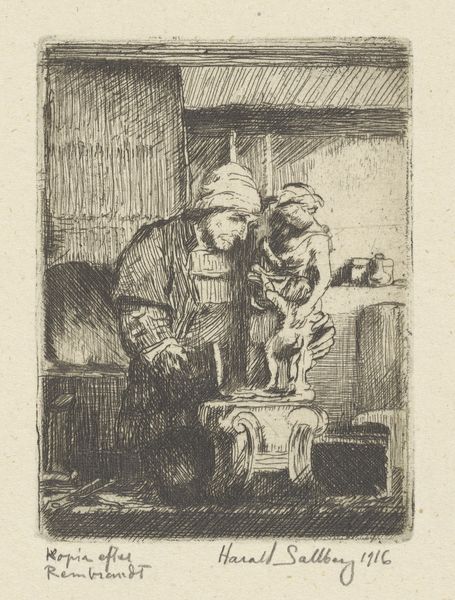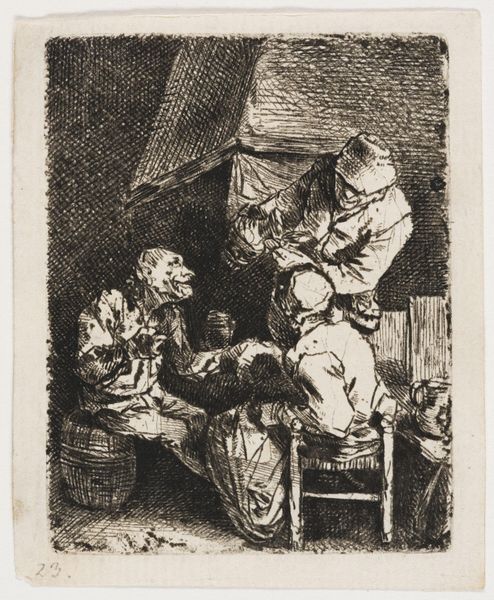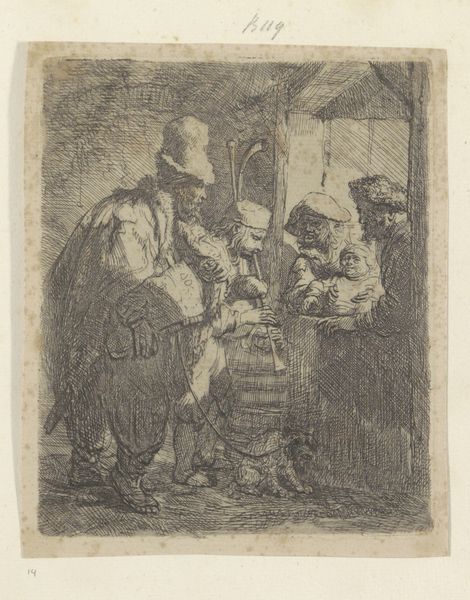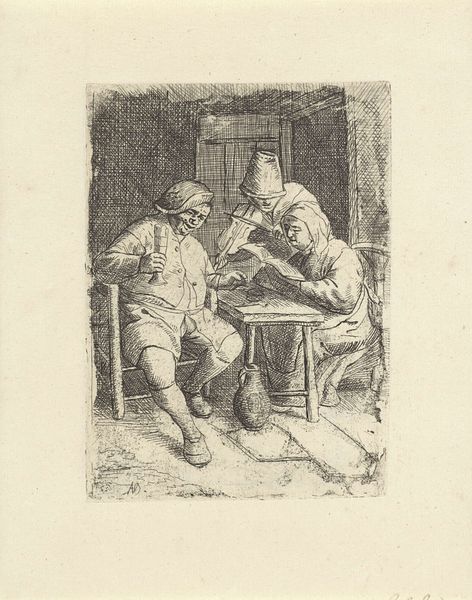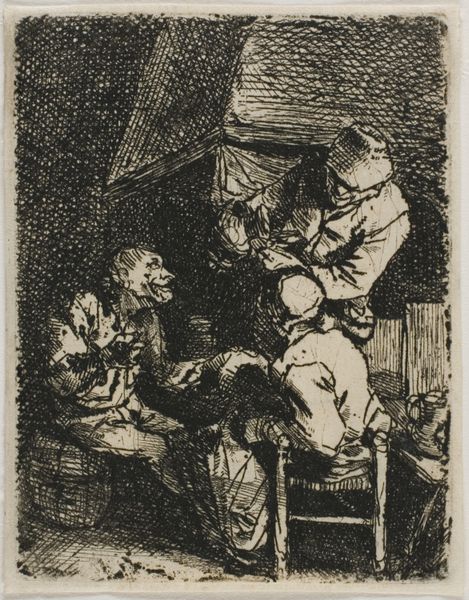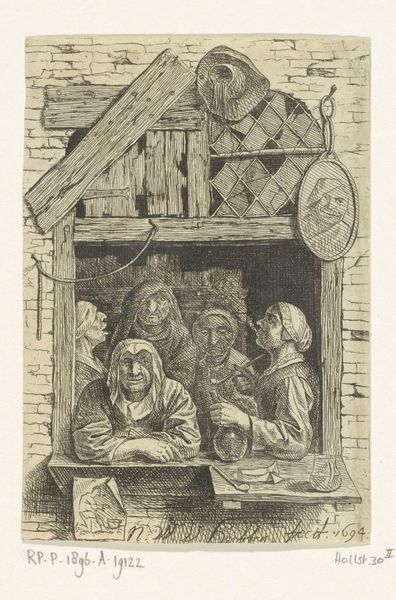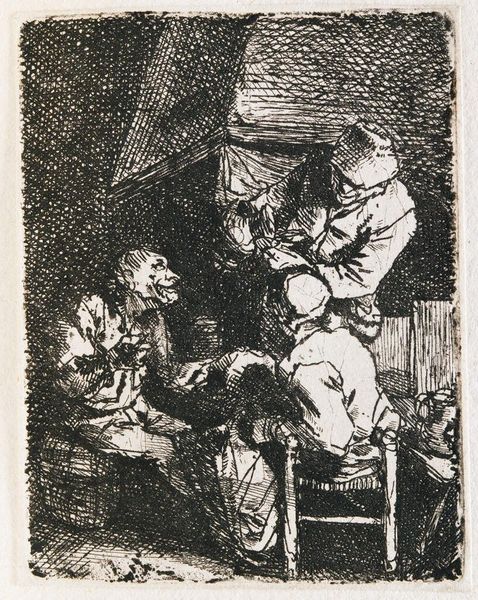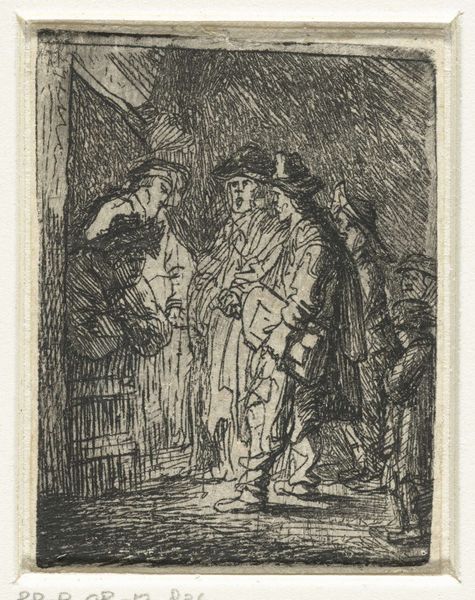
drawing, print, etching
#
portrait
#
drawing
#
dutch-golden-age
# print
#
etching
#
figuration
#
genre-painting
#
realism
Dimensions: height 120 mm, width 88 mm
Copyright: Rijks Museum: Open Domain
Curator: What catches my eye immediately is the sense of lived-in weariness – a portrait of labour, perhaps? Editor: Indeed. Before us is "Boer bij een ton," which roughly translates to "Farmer by a barrel". It’s an etching, dating somewhere between 1690 and 1750, of anonymous creation but exemplary of Dutch Golden Age genre scenes. Curator: Golden Age, yet it feels rather muted. Is it the monochromatic palette, or perhaps the expressions? There's an almost poignant lack of fanfare here, wouldn’t you agree? Editor: Precisely. Note the stark symbolism - the barrel as a pedestal, a platform almost. Consider its association with sustenance, fermentation, transformation... it elevates the farmer, but perhaps also imprisons him. There is a constant interplay of opposites at work. Curator: Imprisonment—that resonates! His eyes, or what we can perceive of them, hold a certain captive quality, even as he’s ostensibly ‘at rest.’ Do you think the pipe contributes to that sensation? A fragile liberty taken amidst toil? Editor: The pipe functions, much like the peasant dress, as a marker of identity, deeply rooted in their epoch and milieu. Consider the companion piece too – she too embodies a unique iconography of rustic living – the spindle and distaff, the endless weaving... their existences are visually woven together, like the threads they manipulate. Curator: So they become archetypes, forever caught within their representational role… that barrel truly takes on the significance of the world. A poignant little microcosm… I almost want to reach out and offer him a more comfortable seat. Editor: In etching, these commonplace figures achieve immortality – a frozen instant containing centuries of cyclical toil and bucolic existence. A cultural memory made palpable through ink and paper. Curator: I find myself questioning how we engage with these archetypes now. Are we simply passive observers, or do these echoes of past existences compel us to interrogate the ever-shifting dynamic between humanity and work? Editor: That question itself keeps their reality reverberating throughout our modern condition, a gentle insistence to resist being forgotten.
Comments
No comments
Be the first to comment and join the conversation on the ultimate creative platform.

